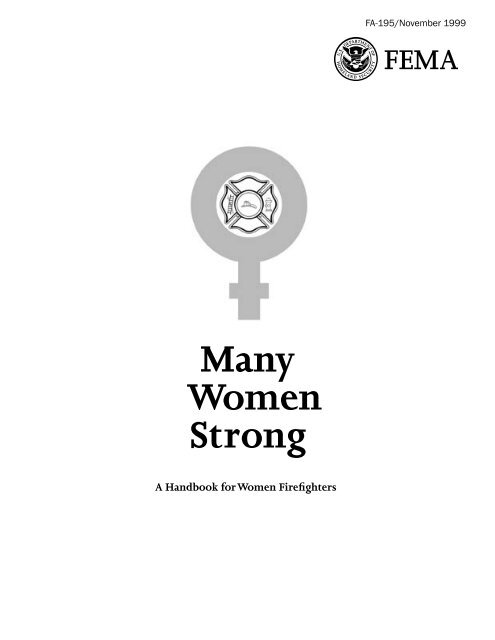
Fitness evaluations are crucial for aspiring firefighters to ensure they are physically capable of handling the demanding nature of the job. These assessments help determine an individual’s strength, cardiovascular endurance, and overall physical fitness, which are essential for successfully performing the duties of a firefighter.
As firefighting often involves strenuous activities in high-stress environments, it’s vital for candidates to undergo thorough fitness evaluations to ensure they possess the necessary physical capabilities. These evaluations also help mitigate the risk of injury on the job and ensure the safety of both the firefighters and the public they serve.
By prioritizing fitness assessments, fire departments can ensure they are selecting candidates who are best equipped to handle the rigors of the role, ultimately contributing to a more effective and efficient firefighting force.
Contents
Importance Of Fitness Evaluations
Firefighters play a crucial role in maintaining public safety and protecting property during emergencies. Given the physically demanding nature of their job, ensuring that aspiring firefighters are in top physical condition is paramount. This underscores the importance of fitness evaluations, which serve as a vital screening process to ensure that candidates possess the required level of physical fitness to perform their duties effectively and safely.
Ensuring Optimal Performance
The rigorous demands of firefighting necessitate a high level of physical fitness to ensure that firefighters can adequately perform their duties under challenging conditions. Fitness evaluations help in assessing candidates’ physical capabilities, such as strength, endurance, and agility, ensuring that they are capable of meeting the strenuous demands of the job. By identifying potential deficiencies, candidates can be provided with targeted training to enhance their performance, ultimately contributing to the overall effectiveness of firefighting operations.
Reducing The Risk Of Injuries
Firefighting inherently carries a high risk of injury due to the physically demanding and hazardous nature of the job. Fitness evaluations serve as a preventive measure by assessing candidates’ physical readiness, thereby reducing the risk of on-the-job injuries. Identifying weaknesses through fitness assessments allows for tailored fitness programs to address specific areas of concern, ultimately mitigating the risk of potential injuries during firefighting operations. This proactive approach not only safeguards the well-being of firefighters but also ensures the continuity of essential emergency services.

Credit: www.usaconservation.org
Fitness Evaluation Process
Becoming a firefighter requires a high level of physical fitness and endurance. Therefore, it is crucial for aspiring firefighters to undergo a comprehensive fitness evaluation process. This ensures that they can meet the demanding physical requirements of the job and perform their duties effectively. The fitness evaluation process consists of various assessments that focus on different aspects of physical fitness, including cardiovascular endurance, muscular strength, and flexibility. By thoroughly assessing these areas, fire departments can ensure that their firefighters are capable of handling the physical challenges they may encounter in the line of duty.
Physical Assessments
Physical assessments play a key role in determining an individual’s overall physical condition and capability. These assessments encompass a range of tests designed to evaluate an individual’s strength, endurance, and flexibility, all of which are crucial for firefighters.
Cardiovascular Endurance Testing
Cardiovascular endurance testing evaluates an individual’s ability to sustain prolonged physical activity. This is vital for firefighters who often encounter physically demanding situations where endurance is essential for performing their duties effectively and safely.
Muscular Strength And Endurance Evaluation
Muscular strength and endurance evaluations are conducted to assess an individual’s ability to perform tasks that require strength and stamina, such as carrying heavy equipment or rescuing individuals in emergency situations. These evaluations ensure that aspiring firefighters have the physical capability to meet the demands of the job.
Flexibility And Mobility Assessments
Flexibility and mobility assessments focus on an individual’s range of motion and flexibility, which are essential for maneuvering through confined spaces, performing various firefighting techniques, and preventing injuries. By evaluating these aspects, fire departments can ensure that firefighters possess the flexibility needed to carry out their duties effectively and minimize the risk of injuries.
Benefits Of Fitness Evaluations
Fitness evaluations play a crucial role in the selection process for aspiring firefighters. These evaluations are not only necessary to ensure the physical capability of candidates but also offer a range of benefits in the recruitment process. By conducting fitness evaluations, fire departments can identify areas for improvement, develop tailored training programs, ensure fairness and equal opportunities, and promote a culture of health and fitness.
Identifying Areas For Improvement
Fitness evaluations provide valuable insights into candidates’ strengths and weaknesses. By assessing their physical abilities, fire departments can identify areas that need improvement, enabling individuals to focus on specific fitness goals. This approach allows candidates to work on their weaknesses proactively and develop a well-rounded skill set.
Developing Tailored Training Programs
Based on the results of fitness evaluations, fire departments can create customized training programs for aspiring firefighters. These tailored programs address the specific areas that need improvement, enabling candidates to enhance their physical capabilities effectively. By targeting individual needs, training becomes more efficient, leading to better preparedness and reduced risk of injuries during the demanding tasks firefighters face.
Ensuring Fairness And Equal Opportunities
Fitness evaluations create equal opportunities for all candidates and ensure a fair selection process. By setting a baseline level of fitness, these evaluations provide a standardized measure for assessing applicants. This approach ensures that all candidates are evaluated on the same criteria, creating a level playing field that is free from bias or favoritism. Through this fairness, fire departments can select the best candidates solely based on their physical abilities and potential to serve effectively as firefighters.
Promoting A Culture Of Health And Fitness
Conducting fitness evaluations promotes a culture of health and fitness within fire departments. By emphasizing the importance of physical well-being, the evaluation process encourages candidates to maintain a healthy lifestyle and prioritize their fitness. This focus on health not only benefits the candidates but also contributes to the overall well-being and performance of firefighters. It establishes a foundation of physical strength, endurance, and resilience that is vital in the challenging and often life-threatening situations firefighters encounter.
Challenges And Controversies
Implementing fitness evaluations for individuals aspiring to become firefighters brings with it its own set of challenges and controversies. This section will delve into three key areas of concern: the standardization of evaluation criteria, potential discrimination concerns, and the costs and resources required. Analyzing these challenges and controversies is crucial to fully understanding the need for fitness evaluations in the firefighter recruitment process.
Standardization Of Evaluation Criteria
One challenge that arises when implementing fitness evaluations for firefighter candidates is the need for standardized evaluation criteria. It is important to establish clear and consistent guidelines that accurately measure the physical capabilities required for the demanding nature of the job. With a standardized approach, fire departments can ensure fairness and transparency in the evaluation process, allowing candidates to be assessed on an equal footing.
Potential Discrimination Concerns
While fitness evaluations aim to identify individuals who possess the necessary physical ability to perform firefighting tasks effectively, there is a potential for discrimination concerns to arise. Striking a balance between evaluating physical fitness and avoiding discrimination based on age, gender, or other protected characteristics is essential. Fire departments must ensure that the evaluation criteria focus solely on job-related tasks that are necessary for the role, minimizing the risk of bias or unfair treatment.
Costs And Resources Required
Introducing fitness evaluations for firefighter candidates can entail significant costs and resource allocation for fire departments. The implementation of evaluation protocols, training assessors, and acquiring appropriate equipment all come with associated expenses. Moreover, conducting evaluations can be time-consuming and require a dedicated team of professionals. Balancing the costs and resources required with the overall benefits of comprehensive firefighter fitness assessments is a key consideration for fire departments.
Success Stories
Improvements In Firefighter Performance
A fitness evaluation for aspiring firefighters has proven to be a game-changer, leading to significant improvements in their performance. By assessing their physical capabilities, these evaluations help ensure that firefighters are in optimal shape to handle the demanding tasks they face on a daily basis.
Studies have shown that firefighters who undergo rigorous fitness evaluations show enhanced endurance, strength, and flexibility. They can carry heavy equipment, climb stairs, and navigate through hazardous environments with greater efficiency, reducing response times and increasing overall effectiveness.
Moreover, firefighters who have undergone fitness evaluations demonstrate improved cardiovascular health, enabling them to thrive in high-pressure situations. With stronger hearts and lungs, they can better endure the stress and physical exertion associated with firefighting duties, leading to enhanced performance in critical moments.
A vital benefit of implementing fitness evaluations is the potential for a significant reduction in work-related injuries among firefighters. These evaluations enable authorities to identify and address physical weaknesses or imbalances that could contribute to injuries on the job.
By targeting problematic areas such as core strength, flexibility, and agility, firefighters can proactively mitigate the risk of sprains, strains, and other injuries during rescue operations or while carrying heavy equipment. This, in turn, minimizes time off due to injury, ensuring a consistent and reliable firefighting force.
Not only do fitness evaluations help prevent injuries, but they also aid in the early detection of pre-existing medical conditions that could compromise a firefighter’s safety. By assessing cardiovascular health, blood pressure, and overall fitness levels, evaluations can identify potential health issues before they become serious concerns.
Positive Impact On Recruitment And Retention
The inclusion of fitness evaluations in the firefighter recruitment process has several positive effects, enhancing both the selection and retention of qualified candidates. This practice ensures that those entering the profession possess the physical capabilities necessary to handle the demands of the job.
By implementing fitness evaluations, fire departments attract individuals who understand the importance of physical fitness and are prepared for the challenges they will face. This selective approach ensures that the next generation of firefighters is committed to maintaining their fitness levels throughout their careers, improving the overall strength and capability of the firefighting team.
Furthermore, fitness evaluations lead to increased retention rates among firefighters. Those who consistently pass evaluations are more likely to remain in the profession for extended periods, contributing their experience and expertise to their respective fire departments.

Credit: www.umc.edu

Credit: en.wikipedia.org
Frequently Asked Questions Of Justify The Need For Fitness Evaluations For Those Wishing To Become Firefighters.
Why Are Fitness Evaluations Necessary For Aspiring Firefighters?
Fitness evaluations are necessary for aspiring firefighters to ensure they possess the physical ability and endurance required for their demanding job. These evaluations help to identify any potential health risks or limitations that could pose a safety hazard during emergency situations.
By assessing their fitness levels, firefighters can be better prepared to protect and save lives effectively.
What Does A Fitness Evaluation For Firefighting Entail?
A fitness evaluation for firefighting typically includes assessments of cardiovascular endurance, muscular strength, flexibility, and overall fitness. It may involve exercises such as running, stair climbing, weightlifting, and agility drills. These evaluations are designed to determine if candidates have the necessary physical capabilities to handle the rigorous tasks they will encounter as firefighters.
How Do Fitness Evaluations Contribute To Firefighter Safety?
Fitness evaluations contribute to firefighter safety by ensuring that candidates possess the physical abilities required to perform their duties effectively. These evaluations help identify any underlying health issues or physical limitations that could impact a firefighter’s ability to respond to emergencies or carry out tasks that require strength, endurance, and agility.
By assessing fitness levels, potential risks and safety hazards can be better managed, reducing the chances of injury or harm to both firefighters and those they rescue.
Conclusion
Fitness evaluations are an essential component for individuals aspiring to become firefighters. These assessments ensure that candidates possess the physical strength, endurance, and overall fitness required to effectively carry out the demanding tasks associated with firefighting. By assessing their physical capabilities, these evaluations contribute to the safety and efficiency of both aspiring firefighters and the communities they serve.
So, don’t overlook the importance of fitness evaluations in the path towards becoming a firefighter.




